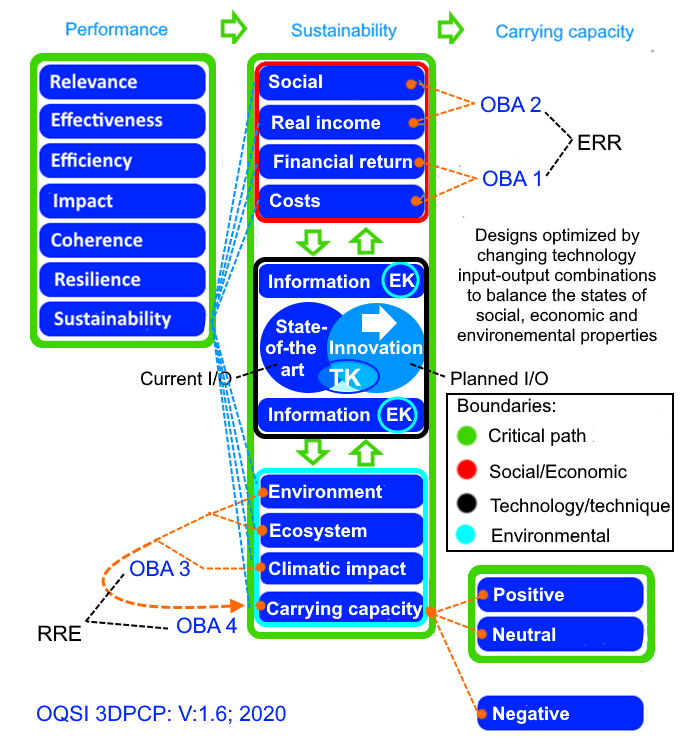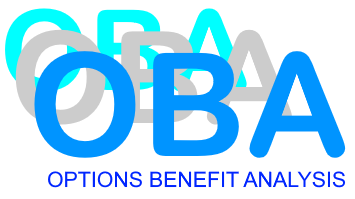Sustainability
In its basic form we are interested in "sustainability" in the sense of the renewable natural resources of the planet not being overwhelmed by the increasing consumption levels of a rising human population and our use of inappropriate technologies used to satisfy basic human needs. At the moment, the human race is failing to slow down the rate of growth in the population size or to change technologies and techniques so as to stabilize the carrying-capacity of renewable resources. There is much emphasis on "environmental concerns" and "climate change" but in reality the 2019 Sustainable Development Report published by the United Nations has pointed to the fact that there is a direct correlation between "economic growth" and increasing levels of income disparity, declining production and consumption sustainability and negative impacts on the climate in the form of rising temperatures.
Sustainability performance criteriaIn the agricultural sectors which employ the majority of the world's population, the current performance of a farm can be determined by applying the established criteria by the Open Quality Standards Initiative (OQSI) which are measured determined in terms of the performance of processes promoting sustainability assessed in terms of:
- Relevance
- Effectiveness
- Efficiency
- Impact
- Coherence
- Resilience
- Sustainability
|
The components of sustainability
The formal areas for consideration of sustainability were restricted to:
- Social
- Economic
- Financial
- Technology
- Environmental
|

The Club of Rome 1972 publication, "The Limits of Growth" identified the main problem facing humanity in the title of this publication.
The limits of growth are determined by the carrying capacity of the natural resources system and all other human activities depend upon this measure. |
|
|
The OQSI has extended this list by replacing the economic domain by adding real income and costs and dividing the environmental domain into ecosystem, climate change and carrying-capacity. The domains of sustainabilty analysis has therefore been expanded to the following components:
- Social
- Real Income
- Financial return
- Costs
- Technology
- Environment
- Ecosystem
- Climate change
- Carrying capacity
|
Carrying capacityThe best summary of sustainability is carrying capacity. This was the initial measure applied by the Club of Rome study released in 1972 by MIT entitled, "
The Limits of Growth". No matter what happens in all of the various criteria for sustainability performance related to different perspectives the final result will be measured in terms of the carrying capacity of the planet of the current combinations in population numbers and technological processes. The changes in the environmental factors of the decline in ecosystem biodiversity and resilience and rising temperatures indicate receding areas of feasible agricultural production due to drought and crop cycle disruption resulting from high seasonal temperatures. The rise in temperature will result in much more water entering the atmosphere as a result of evapotranspiration and therefore more concentrated rainfalls leading to disruptions caused by soil erosion, mud slides and crop destruction. On balance, carrying capacity is declining while human populations continue to rise. This is not sustainable.
The combination of these two sets of criteria can be observed in the OQSI critical path for sustainability and climate action below.

Depending on the degree of adjustment required to improve performance on one or more aspects of sustainability it is necessary to compare different input-output combinations of variable inputs. This signifies a change in the technology and techniques applied within the box with the black boundary as a result of a technological adjustment.
Because these adjustments are physical involving changes in inputs linked to social, economic and environmental factors the OQSI critical path model groups these changed as impacts measured as:
- ERR - Economic Rates of Return
- RRE - Rate of Return to the Environment
|
Options Benefit Analysis
In response to the 2019 Sustainable Development Report that indicated the failures in the Agenda 2030 portfolio as economic growth being correlated to declining real incomes, falling production and consumption sustainability and rising temperatures (climate change), the OQSI accepted proposals from SEEL-Systems Engineering Economic Lab to recommend four types of cost benefit analyses referred to as Options Benefit Analyses (OBAs) where the measured benefits against costs are:
- OBA1 - cost financial return analysis
- OBA2 - cost real income return analysis
- OBA3 - cost carbon footprint reduction analysis
- OBA4 - cost carrying capacity state analysis
|
These are "positive" quantitative determinant procedures that enable a direct confirmation of the impact of a particular solution on real incomes (income disparity), financial return, reduction in climatic impact and overall impact of carrying capacity. Therefore as a basis for designing actions they provide direct measurements of potential impacts of a given technological option.
The ERR essentially compares the cost of the new technical profile measured by the OBA2 which compares the new costs to changes in real incomes which also support social factors related to income disparity or living income. OBA1 compares new costs to changes in the financial return (cost Benefit Analysis).
The RRE essentially compares the new costs to changes in the environment and ecosystem linking natural resource base to ecosystem flora and fauna to climatic impact which will impact ecosystems over time measured by OBA3. And the summary result is the comparison of the new costs to the resulting carrying capacity of a project site applying OBA4.
The ERR calculations fall within the red box within the critical path and the RRE calculations within the turquoise box within the critical path.
A satisfactory state is where all criteria and Options Benefit Analyses within the green boundaries generate a carrying capacity that also falls within the green critical boundary as positive or neutral.
The locational-state determinant relationship of, for example yield or biomass production of a crop is shown below.
Stp = D(W,T,N,P,K,E,H,G) ... (i)
Where:
Stp is the State of the target property, in this case biomass;
D id the determinate function;
W is the water regime;
T is the temperature regime;
N is the available nitrogen applied;
P is the available phosphorus applied;
K is the available potassium applied;
E is the energy used e.g. liquid fuels;
H is the human resources used;
G is the genotype (variety) and quantity of seed used.
